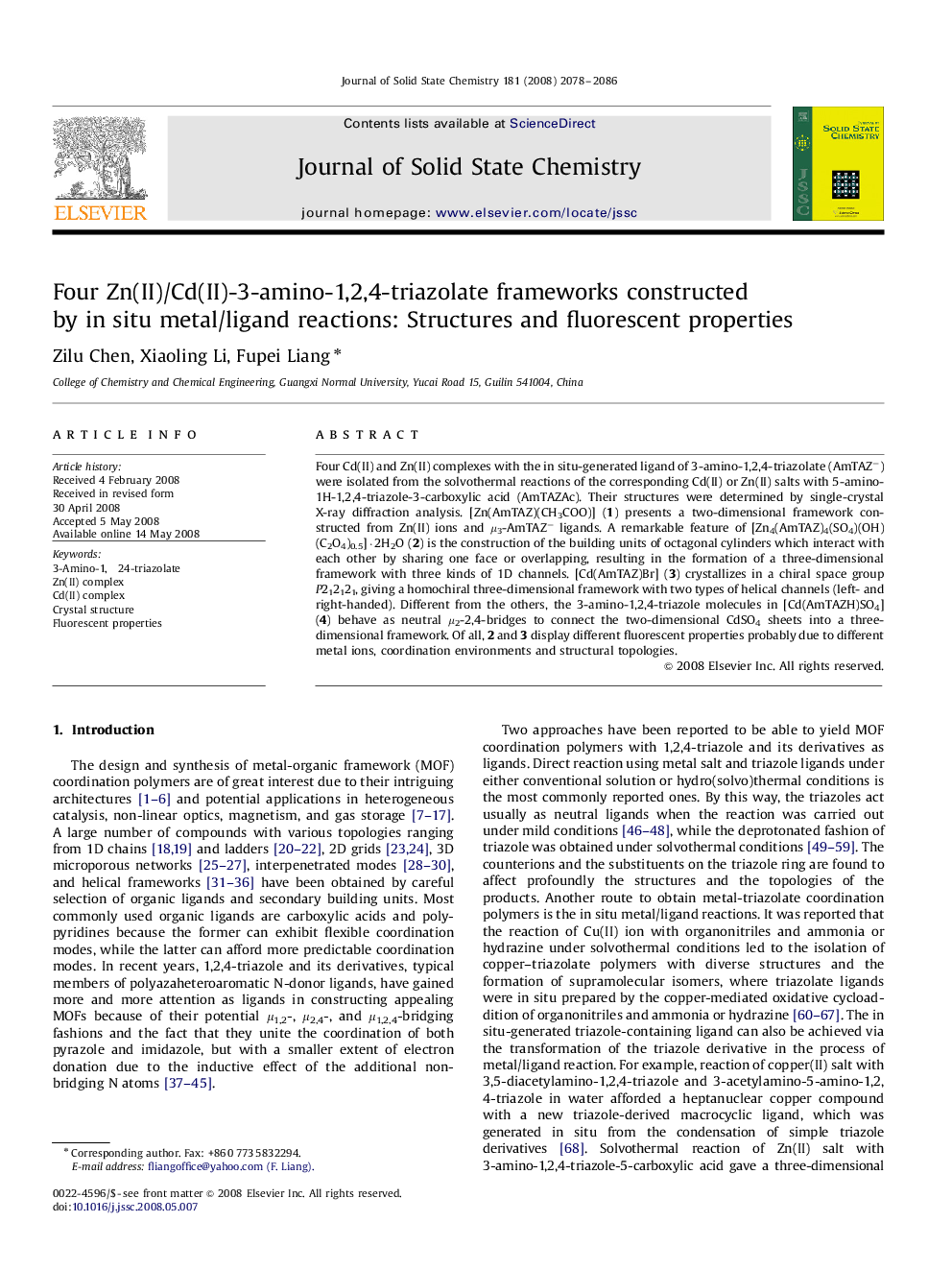| Article ID | Journal | Published Year | Pages | File Type |
|---|---|---|---|---|
| 1332194 | Journal of Solid State Chemistry | 2008 | 9 Pages |
Four Cd(II) and Zn(II) complexes with the in situ-generated ligand of 3-amino-1,2,4-triazolate (AmTAZ−) were isolated from the solvothermal reactions of the corresponding Cd(II) or Zn(II) salts with 5-amino-1H-1,2,4-triazole-3-carboxylic acid (AmTAZAc). Their structures were determined by single-crystal X-ray diffraction analysis. [Zn(AmTAZ)(CH3COO)] (1) presents a two-dimensional framework constructed from Zn(II) ions and μ3-AmTAZ− ligands. A remarkable feature of [Zn4(AmTAZ)4(SO4)(OH)(C2O4)0.5]·2H2O (2) is the construction of the building units of octagonal cylinders which interact with each other by sharing one face or overlapping, resulting in the formation of a three-dimensional framework with three kinds of 1D channels. [Cd(AmTAZ)Br] (3) crystallizes in a chiral space group P212121, giving a homochiral three-dimensional framework with two types of helical channels (left- and right-handed). Different from the others, the 3-amino-1,2,4-triazole molecules in [Cd(AmTAZH)SO4] (4) behave as neutral μ2-2,4-bridges to connect the two-dimensional CdSO4 sheets into a three-dimensional framework. Of all, 2 and 3 display different fluorescent properties probably due to different metal ions, coordination environments and structural topologies.
Graphical abstractThe solvothermal reactions of Cd(II) and Zn(II) salts bearing different anions with 5-amino-1H-1,2,4-triazole-3-carboxylic acid (AmTAZAc) produced four Cd(II) and Zn(II) MOFs with the in situ-generated 3-amino-1,2,4-triazolate (AmTAZ−) ion as ligand, which display different structural topologies and fluorescent properties.Figure optionsDownload full-size imageDownload as PowerPoint slide
